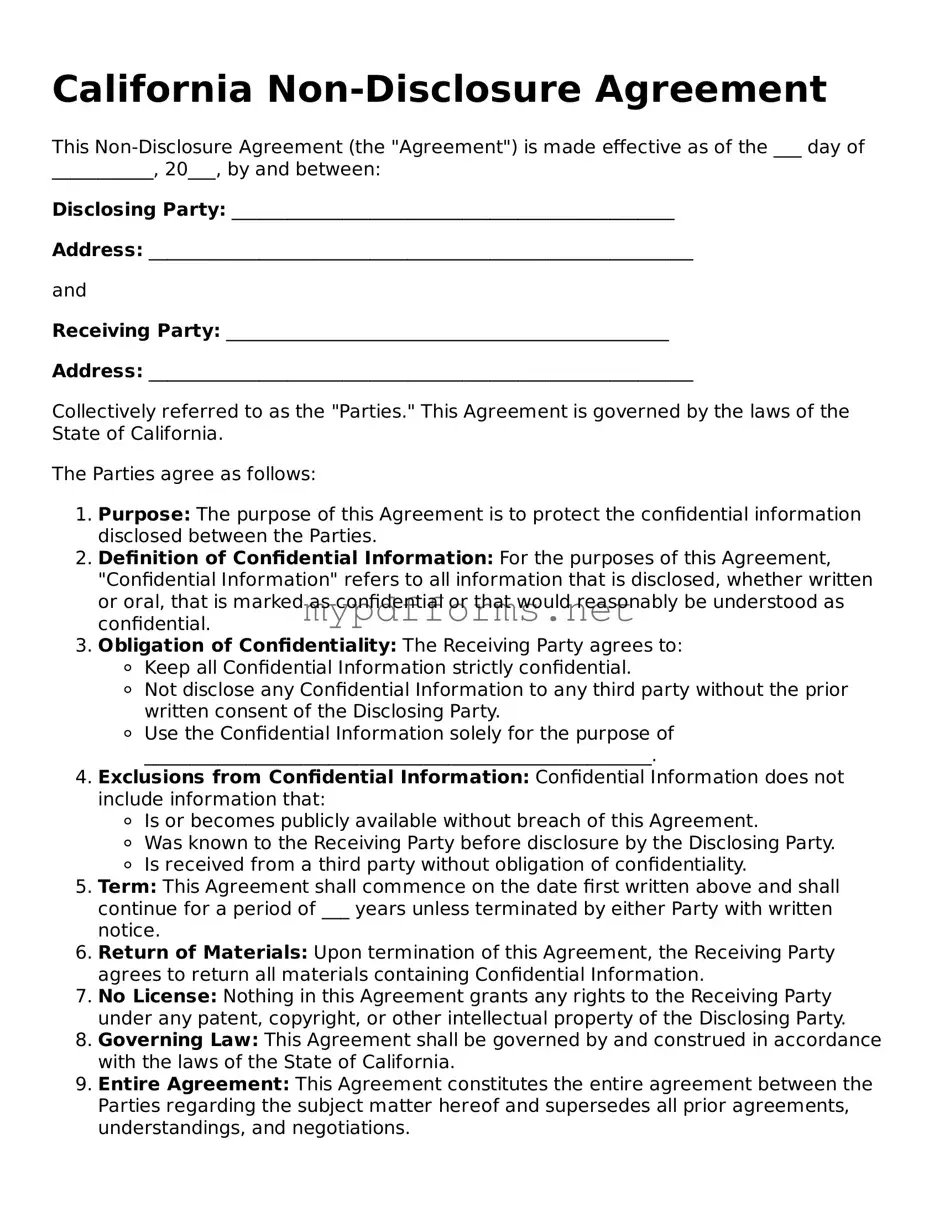The California Non-Disclosure Agreement (NDA) shares similarities with the Confidentiality Agreement. Both documents aim to protect sensitive information from being disclosed to unauthorized parties. A Confidentiality Agreement is often used in business relationships where parties need to share proprietary information, similar to an NDA. They both outline the obligations of the parties involved, specifying what information is confidential and the consequences of breaching the agreement. The terms are designed to create a secure environment for discussions and collaborations, ensuring that sensitive data remains protected.
For individuals considering the importance of designating trusted individuals to manage their affairs, understanding the nuances of various agreements, such as a confidentiality agreement, is essential. Just as a Power of Attorney can delineate decision-making authority, a confidentiality agreement can safeguard sensitive information shared during such processes. Those interested in the legalities surrounding personal decision-making might find resources like Illinois Forms to be invaluable in ensuring their rights are protected.
Another document closely related to the California NDA is the Non-Circumvention Agreement. This type of agreement prevents one party from bypassing another to engage directly with a third party, often in business dealings. While an NDA focuses on protecting confidential information, a Non-Circumvention Agreement emphasizes protecting business relationships and opportunities. Both documents serve to foster trust and transparency between parties, ensuring that all involved can operate without fear of exploitation or betrayal.
The California NDA is also similar to a Non-Compete Agreement. While the primary purpose of a Non-Compete Agreement is to restrict one party from entering into direct competition with another for a specified period, it often includes clauses about the handling of confidential information. Both agreements aim to protect a business's interests, whether by safeguarding trade secrets or preventing unfair competition. They provide a framework to maintain competitive advantages and ensure that sensitive business information is not misused.
Lastly, the Memorandum of Understanding (MOU) can also be compared to the California NDA. An MOU outlines the intentions and expectations of parties entering a partnership or collaboration. While it may not have the same legal enforceability as an NDA, it often includes confidentiality clauses to protect sensitive information shared during the partnership. Both documents create a foundation for cooperation and trust, ensuring that parties are on the same page regarding their responsibilities and the handling of confidential matters.
